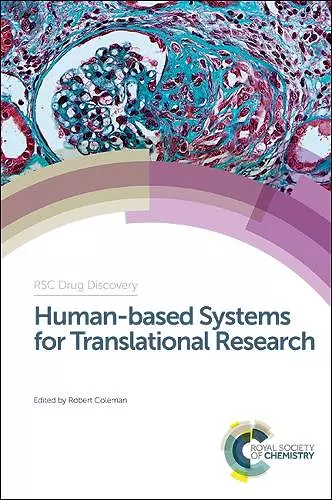Human-based Systems for Translational Research
Format:Hardback
Publisher:Royal Society of Chemistry
Published:9th Dec '14
Currently unavailable, and unfortunately no date known when it will be back

This book provides a history and discussion of the use of human tissues as an alternative to animal-based testing for assessing the efficacy and safety of new medicines. Beginning by providing a historical background to animal-based testing, this text then describes in detail the issues relating to access to human cells and tissue and the rules and regulations governing their use. The book illustrates what is currently possible in humanising medicines research and development, and suggests more rational and reliable means of developing safe and effective drugs for the future than those on which we currently rely. Early chapters establish the need to generate more data in human-derived test systems, and the need for resources such as tissue banks and standardised processes whilst highlighting the barriers that have prevented such developments so far. Subsequent chapters explore the alternatives to current animal toxicology studies, including stem cells and computational models, with balanced views of the technical challenges and opportunities these offer. In addition, useful information on computational methods and pharmacokinetics are included. This book is an essential read for anyone engaged in translational drug discovery who wishes to consolidate their understanding and broaden their awareness of the key issues involved in accessing primary human tissue and the advantages of doing so.
"The book provides a very interesting historical perspective on the use of animal models."
"...the book is a useful read for anyone engaged in translational drug discovery to consolidate their understanding of the inherent technical difficulties of accessing primary human tissue and the advantages of doing so in the context of the disadvantages of the current animal models."
* ChemMedChem July 20ISBN: 9781849738255
Dimensions: unknown
Weight: 582g
305 pages